Affiliate disclosure: This post may contain affiliate links. Please see our Privacy Policy.
Ingredients for winemaking can be confusing, and you never really know what’s important and what can be safely substituted or skipped. I’ll take you through all the common winemaking ingredients used to make fruit, flower, and vegetable wines so you know just what to expect. I’ll cover honey wine too, so you have all the ingredients for making mead.
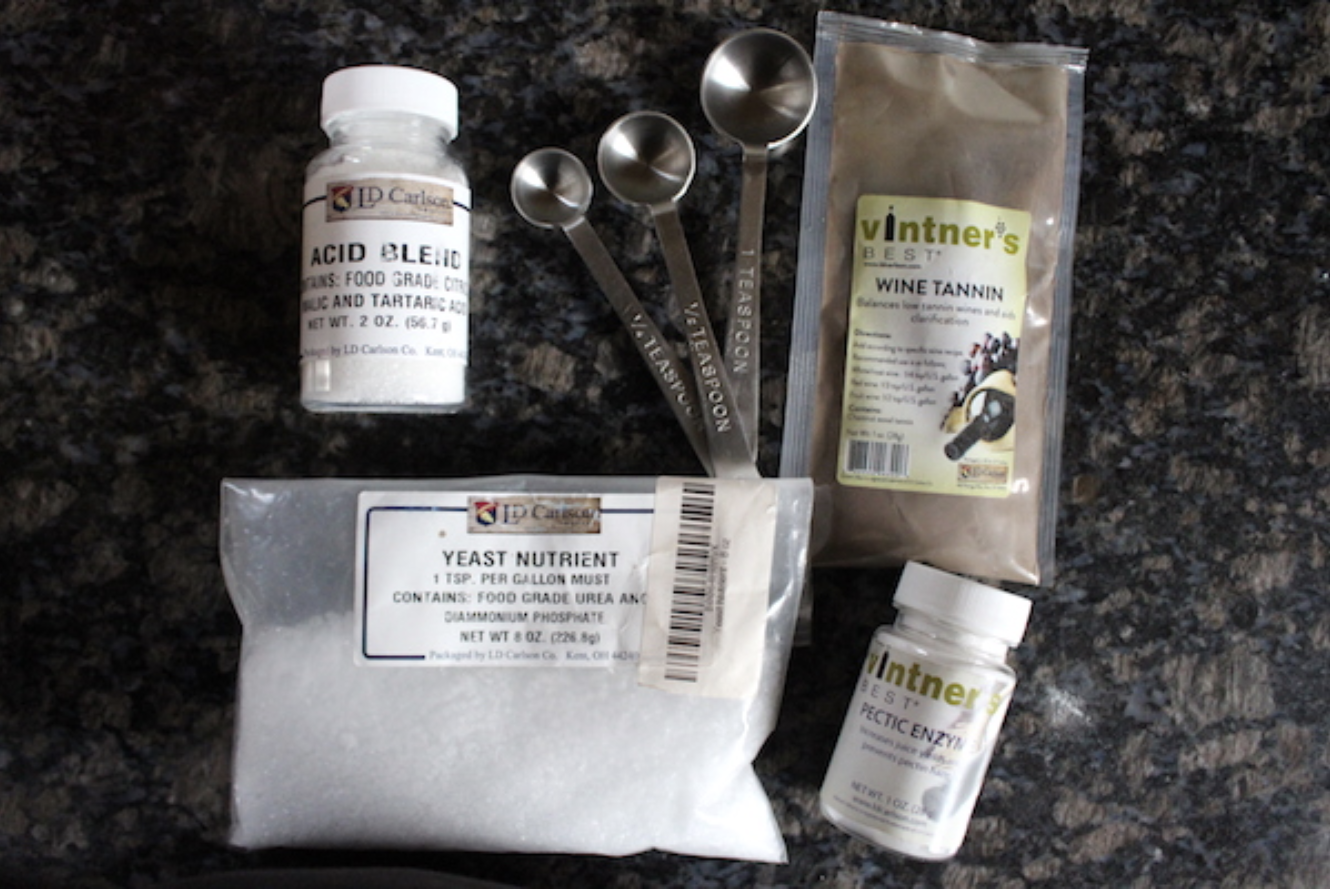
Reading a list of winemaking ingredients can sometimes sound like reading greek. What is a Camden tablet, or Pectic Enzyme?
And sometimes, there are some really off-the-wall ingredients in there. Like, why on earth does a blackberry wine recipe have mashed bananas added? And what are the raisins for?
Don’t worry; I’ll explain everything you need to know about winemaking ingredients.
You’ll learn what’s required, and what’s not. What you can skip altogether, and what you can substitute in a pinch.
If you’re new to winemaking, I’d suggest you also read the other posts in this series, including:
- Beginners Guide to Making Fruit Wines, where I take you through all the steps in the winemaking process.
- Small Batch Winemaking can be done for micro-batches, making as little as 1 bottle of wine at a time, and the process and equipment are a bit different with super tiny batches.
- How to Make Mead (Honey Wine) is mostly the same, but there are some particularities when working with honey.
- Equipment for Winemaking, which covers all the durable equipment you’ll need to make your first batch (besides your ingredients).
- Yeast for Winemaking can get complicated quickly, and there are dozens of common strains (and hundreds of obscure ones). Picking the right one is actually pretty important, but I’ve broken them all down for you.
- How to Make Wine from Grapes, though not necessarily for beginners, but everyone always asks about this one first!
- Winemaking Recipes can be hard to find, but I’ve put together a list of more than 50 to get you started.
- Meadmaking Recipes are even more obscure, but I’ve got you covered there too.
I also have instructions for making hard cider, pear cider (perry), and homemade beer, if you’re into other types of homemade drinks.
Ingredients for Winemaking
The quantity of each ingredient will vary based on the type of fruit and your recipe, but just about every recipe has the same basic ingredients. That’s because all country winemaking recipes are trying to create a balanced fruit wine with enough residual sweetness to be tasty, enough acidity to add a bright flavor, and enough tannin to give a good body and mouthfeel.
The fruit brings some of these things, and the actual amount of each ingredient depends on the type of fruit. Pineapples (in pineapple wine) and lemons (in lemon wine) are obviously a lot more acidic than other fruits, so the acid added in the recipe will be adjusted accordingly.
Some fruits, like blackcurrants, already have natural tannins, so you don’t have to add any. It’s all about balancing what’s already in the fruits to create a high-quality fruit wine.
Here are the basic ingredients for country wine:
- Fruit (or Fruit Juice)
- Sugar
- Yeast Nutrient
- Acid Blend
- Pectic Enzyme
- Tannin Powder
- Wine Yeast
- Camden Tablets (optional)
I’ll take you through each ingredient in detail, and explain why it’s used (and substitutions).

Fruit or Fruit Juice
The fruit is here to add flavor to the wine, but it doesn’t need to be all the liquid in a recipe. Some fruits, like raspberries in raspberry wine, have an incredibly strong flavor, and you have to be careful not to use too much, or the taste of the wine will be overbearing and cloying.
Other fruits are milder, like quince for quince wine, but you’ll need to balance adding enough fruit to ensure good flavor without adding too much in the way of pectin or solids.
Generally, fruit wine recipes add around half a gallon of fruit juice, or roughly 4-5 pounds of fresh fruit, to a gallon. That can vary widely by the type of fruit, but that’s a good starting point that leaves plenty of room in the fermentation vessel for other ingredients (which I’ll get to in a moment).
Dried fruits can also be used, as is often the case when you’re making elderberry wine or fig wine. They’ll need to be rehydrated or made into a tea to extract their flavor and sugar.
If you’re using dried fruits, be sure to choose natural un-sulfured fruits, as the sulfur can inhibit the yeast.

Sugar (or Honey)
Wines need a certain minimum amount of sugar to feed the yeast, and if there’s not enough, the yeast will quickly consume it all and stall out. The result is a very dry wine that’s not alcoholic enough to prevent spoilage.
By adding sugar, or honey, you’re giving the yeast enough fuel to make enough alcohol to stabilize the wine, plus a bit extra so that the wine is balanced (not too dry). This is not optional, as other fruits are not nearly as sweet as wine grapes, and the yeast will finish all the sugars too early in the process.
It’s important to note that you cannot use indigestible sugar substitutes here, and things like monk fruit, stevia, and Splenda just won’t get the job done. The primary goal is to feed the yeast, and the yeast needs to be able to digest the sugar…not just taste sweetness without calories.
You can, however, add other natural sugars when making wine, such as honey, maple, agave, etc. Each will incorporate its own flavor and ferment slightly differently. For the most neutral fruit wine, go with plain white sugar.
Using honey to make wine results in something called “mead” or honey wine, which is incredibly delicious and even better than plain wine, in my opinion. Honey adds incredible body to homemade wine, and pleasant flavor, depending on the type of honey.
I’ll only mention it briefly here, but if you’re interested in working with honey, I’d suggest reading my guide to making mead at home and checking out my list of more than 50 mead recipes.
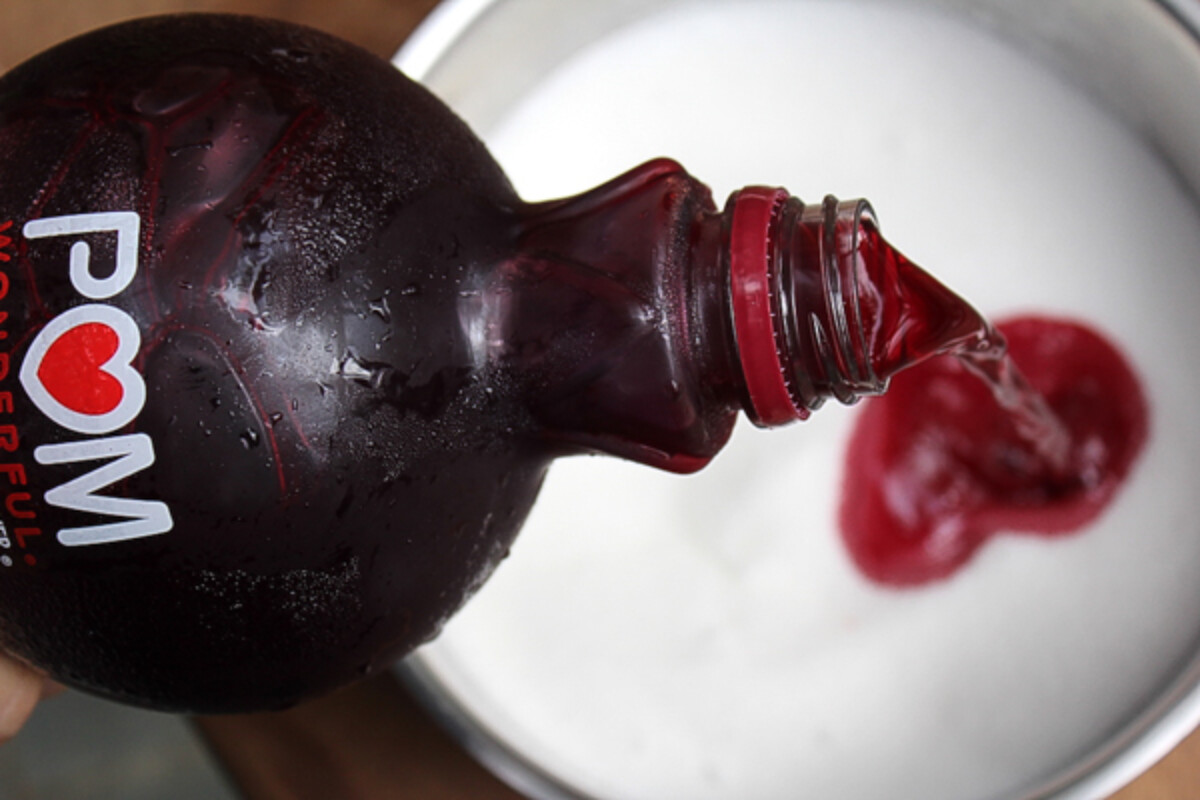
Yeast Nutrient (or Raisins)
While grapes have all the nutrients wine yeast needs to survive, other fruits are often deficient. Adding powdered yeast nutrients is a simple way to ensure the yeasts have everything they need to thrive (since they can’t live on just sugar alone).
You can also add in a handful of raisins which will give them trace nutrients, but it’s less dependable, and the raisins tend to add flavor to the finished wine. (This is not optional, as the yeast need nutrients do make wine.)
Sultana raisins (or yellow raisins) have a more neutral taste, so they’re a good option if you’re working with delicately flavored fruits. But still, powdered yeast nutrient is the best option and won’t impact the flavor of the finished wine.
If you’re using raisins, they’ll be filtered out after primary fermentation.
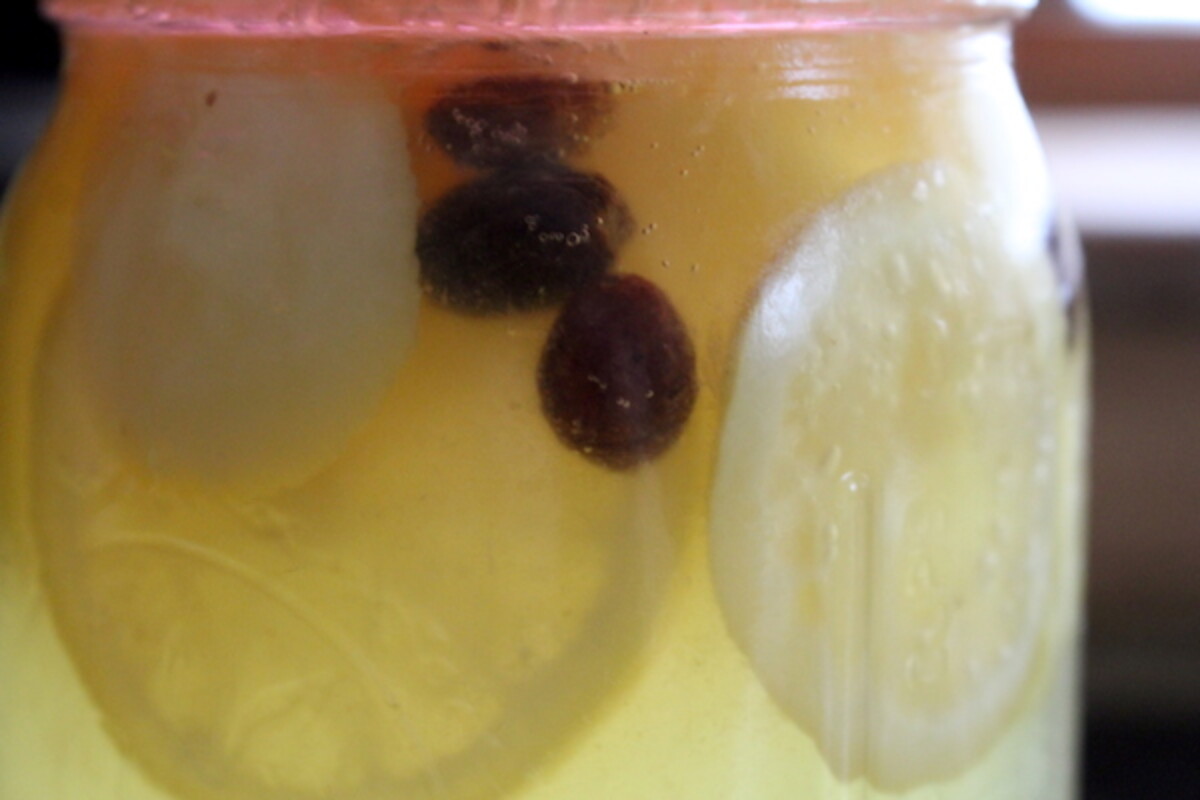
Acid Blend (or Lemon Juice)
Wines need a certain amount of acidity to create a hospitable environment for the yeast, bring out the flavor of the fruit and balance the residual sweetness.
While some fruits may seem naturally acidic, you’d be surprised. Fruits like lemons and blueberries are, in fact, very acidic, but others like pears and peaches are only slightly acidic on a pH scale.
A wine cannot ferment properly without enough acidity, and conversely, the yeast will be inhibited by too much acidity. Look at your winemaking recipe, and be sure to include the correct amount of powdered acid blend (or lemon juice) to bring the pH to the right range.
There’s a pretty big acceptable range here, so don’t stress too much. But you should know that it’s not just for flavor; it’s also to help the fermentation along and prevent stalls.
You can use a powdered acid blend which is formulated for winemaking and yields consistent results, or you can use lemon juice. The powdered acid blend is much stronger than lemon juice, so for every teaspoon of acid blend in the recipe, you’d use a Tablespoon of lemon juice.
(Not all wines need added acid, and you obviously wouldn’t add an acid blend to a homemade lemon wine.)
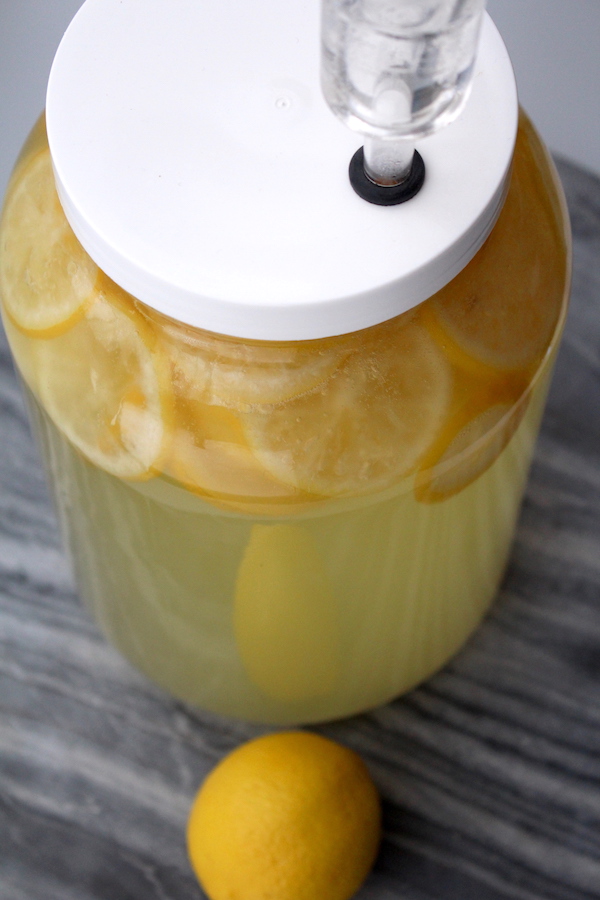
Pectic Enzyme
Fruits generally contain some amount of natural pectin, which is a soluble fiber that helps them retain their structure. Some fruits, like strawberries, are very low in pectin, while others, like currants and cranberries, are high in pectin.
Pectin is really handy when you’re making jam, but it’s not ideal for winemaking. It clouds the wine, resulting in cosmetic issues, but in extreme cases, it can impact mouthfeel.
Pectic enzyme is a natural enzyme that breaks down pectin, and allows it to settle to the bottom during primary fermentation. After that point, it’s left behind when the wine is siphoned to a new container.
It’s optional, but a pectic enzyme will result in a much cleaner wine with better clarity in the end.
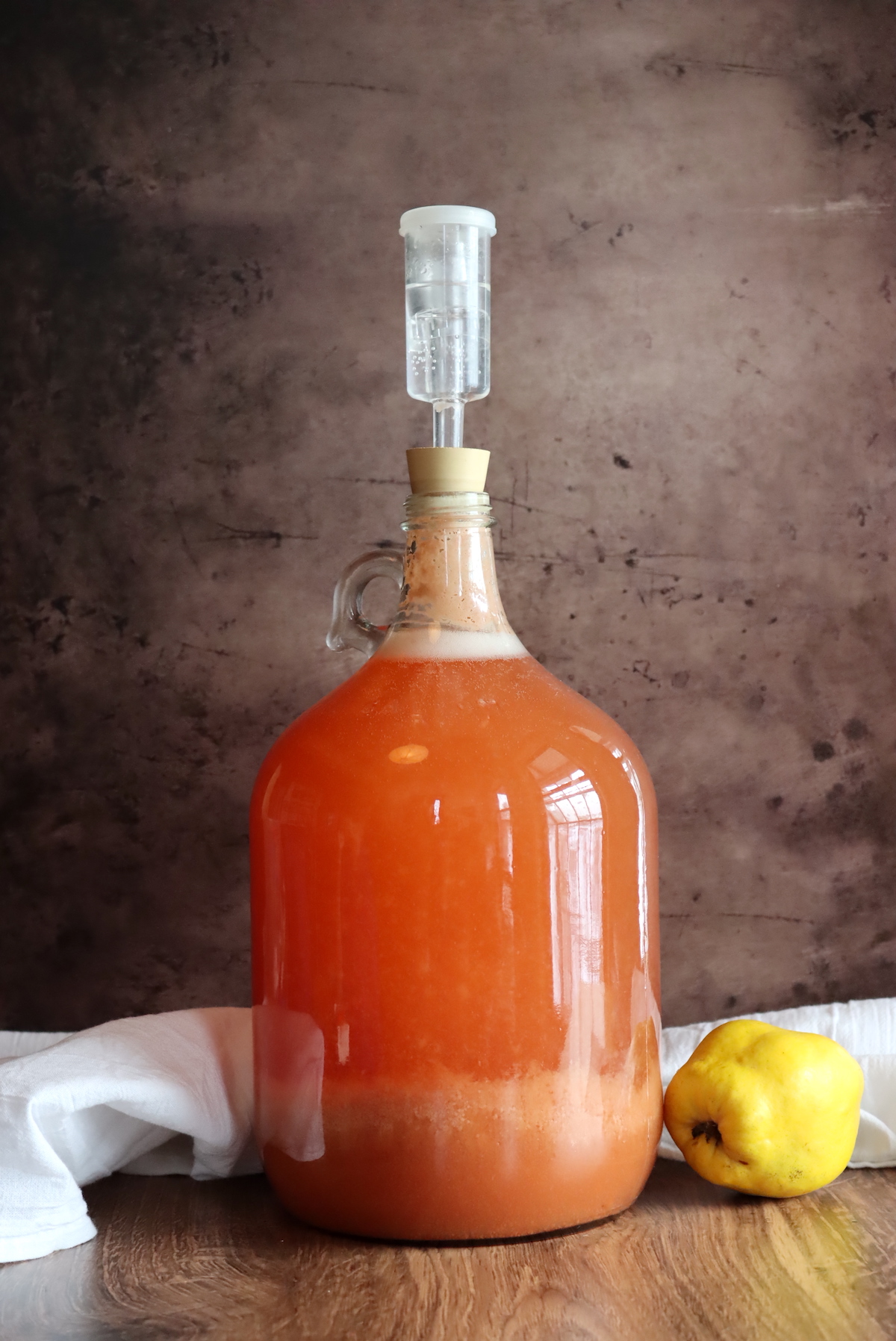
Tannin Powder
Some fruits have natural tannin, which gives a wine body and improves mouthfeel. Just a hint of tannic astringency can balance a wine that would otherwise be cloying or uninteresting.
If you’re using fruits without natural tannins, you need to add in a bit of winemaking tannin powder to help balance the wine. It’s optional, and completely for flavor.
You can also brew a strong cup of plain black tea (like lipton) and add that to primary as a tannin source. Other good tannin sources include grape leaves, currant leaves, tannic wild apples, or crabapples.
Yeast
The type of yeast used in winemaking will actually have a profound impact on the finished flavor (and character) of the wine.
Yeast actually contributes A LOT of flavor as they ferment the drink, and as they work, they’re putting off a lot more than alcohol and carbon dioxide. They’re also putting off flavor esters that can enhance the fruity flavor (or other characteristics) of a wine.
Some yeasts can break down tannin, while others can tolerate high acid environments, while others ferment best in cold or heat.
Finally, alcohol tolerance also plays a roll. Some types of yeast die out at 7% alcohol (usually beer and cider yeast), while others can ferment up to 18 to 20% alcohol (champagne yeasts). The type of yeast will determine the finished alcohol percentage, but also, the residual sweetness.
Using otherwise the same recipe, you could get a very dry or a very sweet wine, based on your choice of yeast.
Winemaking recipes usually give you a few options for yeast types, so be sure to take their advice.
Whatever you do, don’t use bread yeast, as that will make your wine taste like bread (and it only has an alcohol tolerance of around 5% or so.)
This is a topic all on it’s own, and I have another article that covers all the main types of winemaking yeast.
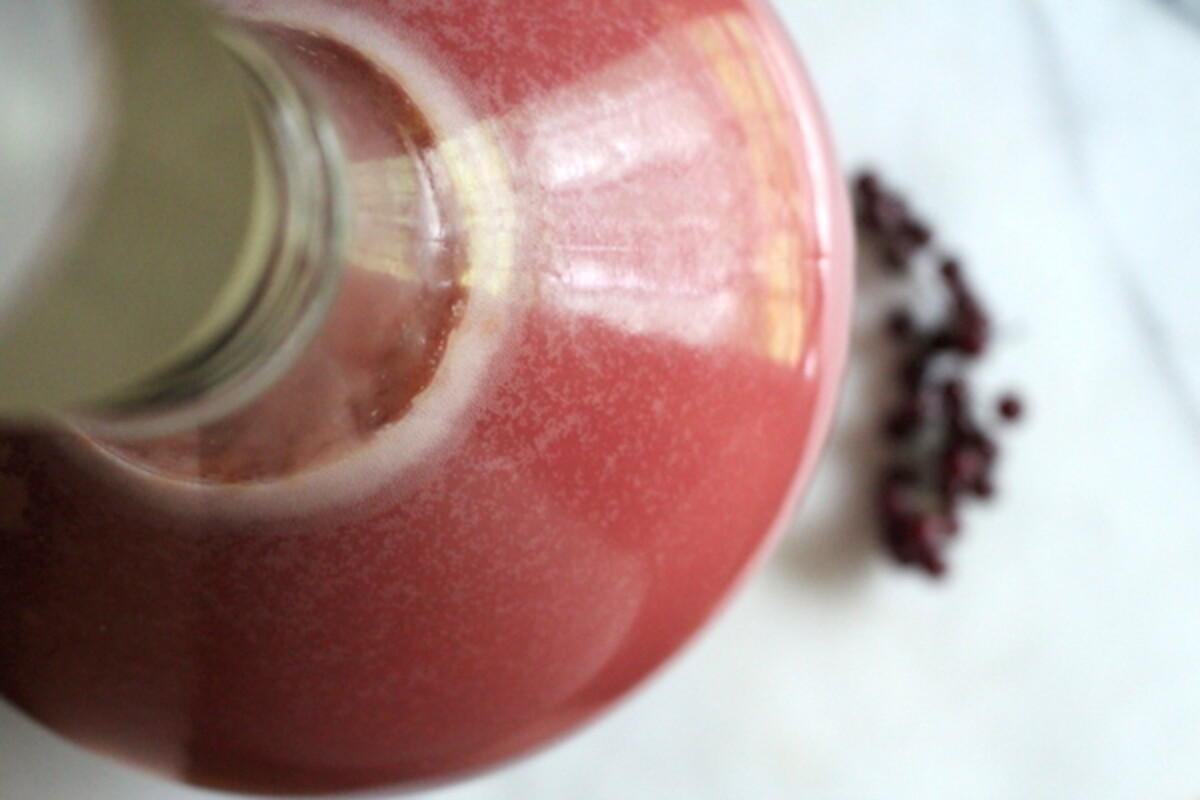
Camden Tablets (and Stabilizers)
These are preservatives and sterilization agents, and they’re optional. (I don’t use them.)
Camden tablets are used to sterilize the fruit juice without heat pasteurization, so you kill off any wild yeasts before you start fermentation. The thing is, wild yeast tends to be much weaker than commercial yeast, so they’ll quickly be outcompeted by your yeast packet (in about 24 to 48 hours). There’s no need to add chemicals to kill them ahead of time, unless your juice/fruit is dirty or contaminated to begin with, in which case you shouldn’t be using it.
Sitll, some people swear by Camden tablets. If you choose to use them, they’re usually added at a rate of 1 tablet per gallon of juice, and then you wait 24 hours for it to wear off before adding your yeast packet (that you don’t want to kill).
At the end of fermentation, some people add sulfites to stabilize their wine, which stops fermentation. If you’ve chosen the right yeast and balanced your recipe, fermentation will naturally stop when the yeast reaches their alcohol tolerance and die out.
Still, some people prefer the extra insurance of sulfites, which ensures that fermentation is stopped at an exact point of their choosing. In that case, they add Potassium Metabisulfite before bottling.
I don’t use either of these in my wines, and they’re a matter of personal preference.
Other Winemaking Ingredients
Sometimes you’ll see other ingredients in winemaking recipes, and they’re much less common. I’ll cover a few of the more common additions and the reasoning:
- Bananas ~ I know, that’s a weird one. Bananas are often added to wines, not for their flavor, but because they contribute a fuller mouthfeel to otherwise thin wines. Floral wines, for example, can be very thin when finished, and benefit from a bit of help to round them out. Bananas generally don’t add much in the way of flavor, provided they’re peeled (much of the flavor and aroma compounds are actually in the peel).
- Grape Juice Concentrate ~ Like bananas, this is usually added to give a wine body, but it also adds sugar, acidity, and yeast nutrients. Table grape juice usually doesn’t have much in the way of tannin, unlike wine grape juice.
- Oak Chips ~ These will give a wine an “oak aged” taste without having to buy an expensive cask.
- Spices ~ Some wines include species, like cinnamon or vanilla, for flavor.
Now that you understand the basic ingredients, I’d encourage you to read on and learn:
Fruit Winemaking Recipes
Here are a few fruit wine recipes to get you started:
- Blackberry Wine
- Blueberry Wine
- Raspberry Wine
- Strawberry Wine
- Lemon wine
- Banana Wine
- Pineapple Wine
- Cranberry Wine
- Elderberry Wine
- Persimmon Wine
- Pomegranate Wine
- Rhubarb Wine
- Watermelon Wine
Flower and Vegetable Wines
While fruit wines are certainly more common, the process is also the same for flower and vegetable wines. Here are a few more recipes to keep your carboy bubbling:
Flower Wines
Vegetable Wines
Mead Recipes
These are also technically “wines,” but they’re called mead when made with honey. The process is nearly the same, but honey takes longer for the yeast to consume so you’ll need to be patient during these ferments. Otherwise, the process is pretty much the same.
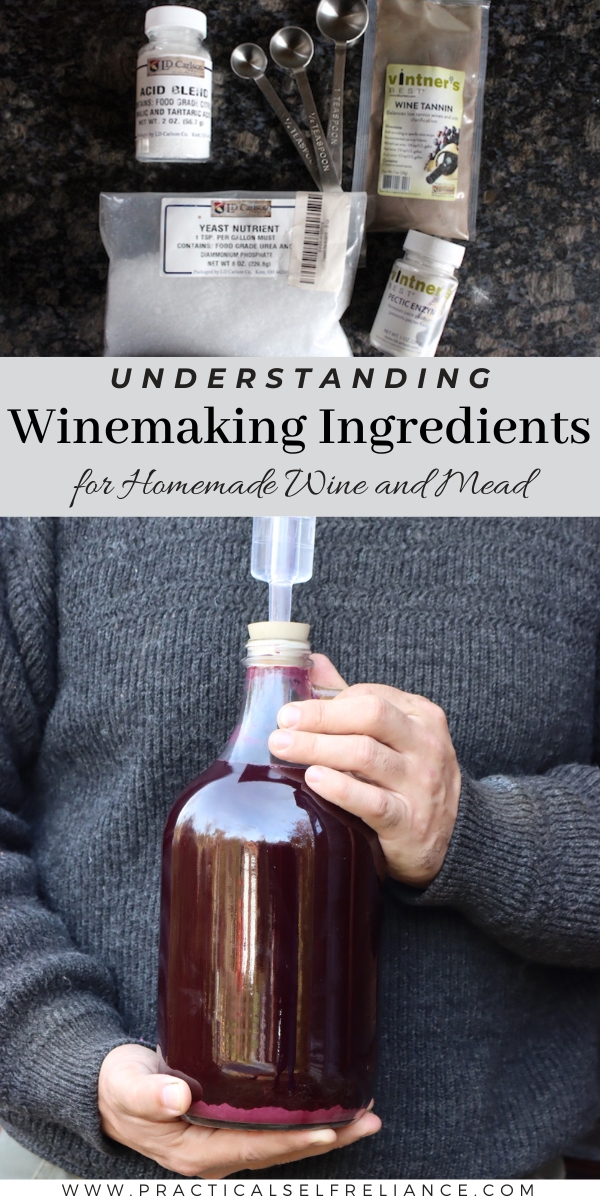



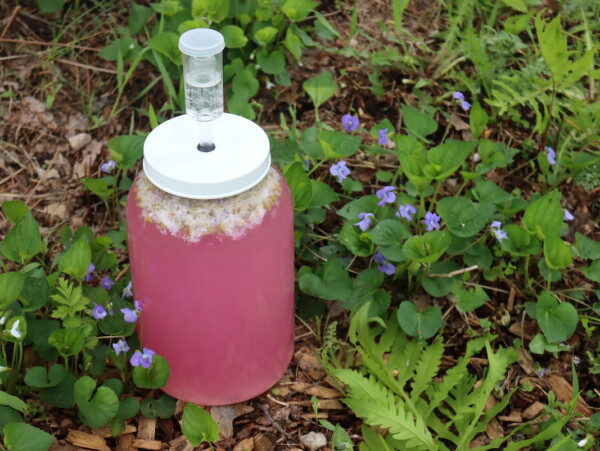










Hi Ashley,
I have 6 gallons of frozen grape juice from my Catawba and Canadice grapes. I have made wine through kits for 15 years but want to try my own grapes. The juice is very tart and clearly needs sweetening before adding yeast. My problem is: How do I check sugar levels and acidity before I add the yeast? (red star Cote des Blancs as you suggested and do I add bentonite like the kits do? . The kits I have used often have a sweetening bag (f-pack) but I’m just not sure how to check the sugar before fermentation.
We actually don’t have any grape wine recipes on the site because it can be much more complicated than making country fruit wines. Here is an article that might give you some more information on that. https://practicalselfreliance.com/make-wine-from-grapes/
Tim, this is probably too late for your frozen juice from 2023, but for future reference you can check the sugar content in your grapes with a hydrometer. Pretty inexpensive and looks like a large thermometer with several measured scales on it and weighted at the bottom. One is specific gravity you can record this ant the beginning and end of fermentation and use math equations to calculate the amount of alcohol in your wine when it’s finished. The other scale is called Brix. It measures the amount of sugar content. Hydrometers are glass and pretty delicate so I would recommend buying them from a local brew store. Anyway, each type of grape/wine has a specific Brix target, those can also be found by searching online, but generally speaking 24 is really good. To raise the Brix of your juice by 1 you add 0.125 lb of sugar per gallon of must.
So if your grapes were at 20 Brix to start and you have 1 gallon of juice
24 – 20 = 4 4 x 0.125 lb sugar = 0.5 lb sugar needs to be added.
If you don’t have a scale to weigh it you can type “convert 1/2 pound sugar to cups” in your search bar and several conversion sites will come up giving you the approximate number of cups to add.
Another handy, but considerably more expensive tool is a refractometer. It can range from $40 to $60 to hundreds of dollars. I bought an inexpensive one to check Brix of my grapes on the vine to see if they were ready to pick. Just squeeze a few drops on the glass, press the cover down on the liquids and look at it in a bright light and it gives you Brix of the grape squeezed on it.
Hope this helps.
Hello. I juiced my elderberries from fresh. Can you tell me for wine what is the amount of juice used rather than by the pound please.
A pound of elderberries equals about a pint of juice, roughly. So substitute 2 cups juice for every pound in the recipe.